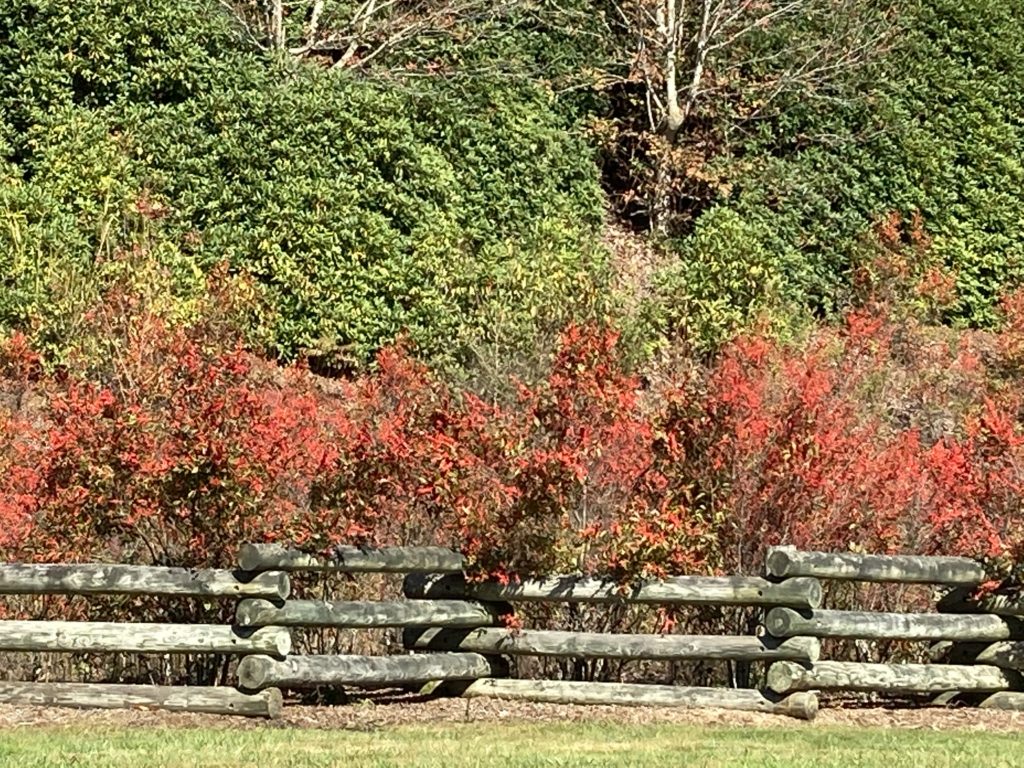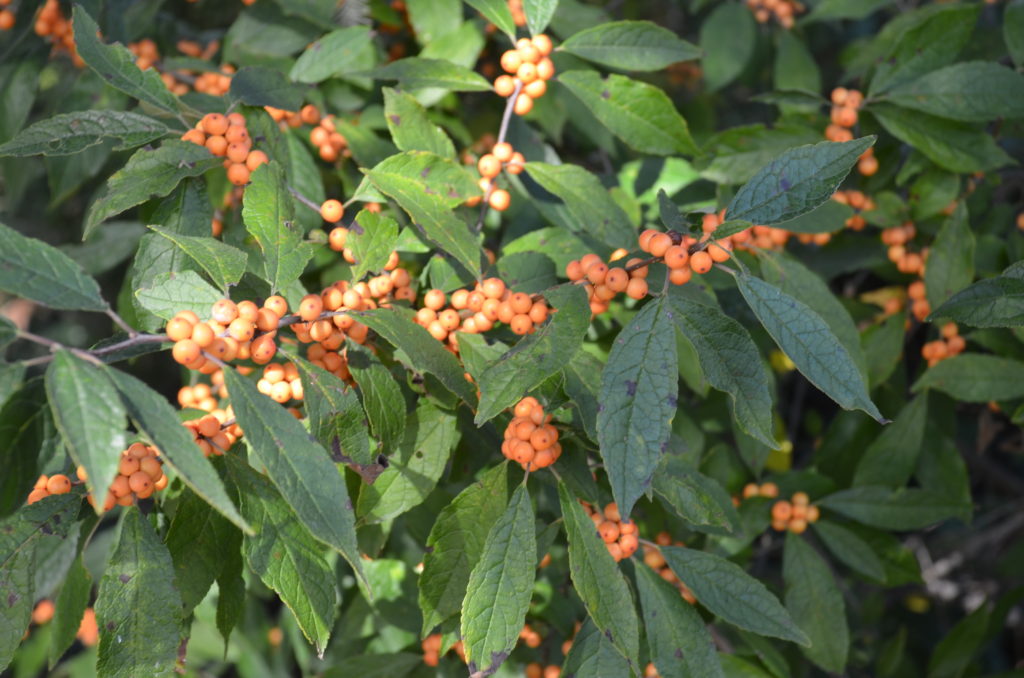
While deciduous hollies (Ilex spp.) are well-known among home gardeners and landscapers, surprisingly few grow them (USDA hardiness zones 3-9 variable by species). In the fall, their branches and twigs are covered in bright red berries. Orange and yellow berried varieties are also available. Birds love them as a winter food source.
Deciduous hollies do not have prickly leaves like evergreen hollies. Their foliage is soft and non-spiny, and are shed by late fall. Two prominent native species — winterberry (Ilex verticillata) and possumhaw (Ilex decidua), plus Japanese winterberry (Ilex serrata) are planted. Numerous hybrid varieties are sold at independent garden centers.
Few gardeners take notice of the tiny greenish-white flowers in spring. Insect pollinators pollinate the blooms. Before purchasing, decide on what cultivars will fit in your landscape site (see below). Cultivars range in size from 2 to 18 feet high and 4 to 10 feet wide. Give individual plants plenty of growing room.
Plant deciduous hollies from spring to early fall in a full to part day sunny site (5+ hours of sun best). Deciduous hollies prefer moist, acidic soils, and don’t mind wet ground. Possumhaw grow tall and wide in moderately alkaline soil. Male clones do not produce fruits, but serve to pollinate female varieties. For optimum berry set, female cultivars should be matched to one or more specific male clones (see below).
Two-year established deciduous hollies are moderately drought tolerant, but produce greater numbers of berries if summer rainfall is adequate. Fertilize in March or April with an acidic organic slow-release fertilizer such as Holly-tone® or Osmocote®. No serious insect or disease problems trouble deciduous hollies.
Clip off berry-covered twigs and branches in fall and winter to bring indoors and arrange in tall vases; no need to add water as cut stems will last quite a while. When shrubs grow too large, cut them back in early spring by one-third or more, even drastically to the ground.

Hedges of deciduous hollies attract all kinds of birds to your property and offer nesting and winter protection for our feathered friends. A background of tall needled evergreens like hemlocks, spruces and pines help make the colorful winter berries to stand out.
Pollinator Info: 6 to 8 feet tall ‘Aurantiaca’ (orange berries), ‘Heavy Berry’, ‘Afterglow’, and compact ‘Red Sprite’ (5 feet tall) are pollinated by early blooming male ‘Jim Dandy’. Late blooming male ‘Southern Gentleman’ pollinates ‘Winter Red’, ‘Winter Gold’, and ‘Sparkleberry’. ‘Apollo’ is a late pollinator for ‘Sparkleberry’ and ‘Winter Red’.

 Posted in
Posted in 
